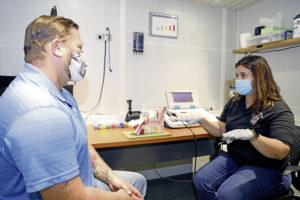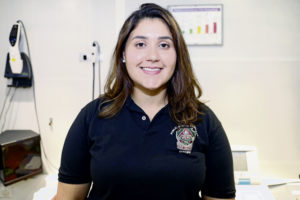
For the foreseeable future, wearing a face mask in public settings will continue to be a requirement. While a mask helps with preventing the spread of coronavirus, it can also make it more difficult to understand speech.
“Masks muffle sound,” said Dr. Angeli Mohanani-Posey, an Army Hearing Program Coordinator with Public Health Command Europe. “Masks also take away our ability to read lips and see facial expressions. We use a combination of what we see and hear to piece together what was said.”
Mohanani-Posey added that there could be an emotional impact as well as the physical impact to an individual.
“As communication suffers, feelings of stress and isolation may also increase,” she said. “When it is difficult to communicate, people may find that they avoid activities, people and places they once enjoyed.”
Hearing-impaired individuals are at a greater disadvantage because not only do they experience the muffled speech from the mask and the loss of facial cues, but also the additional layer of hearing loss.
For individuals with hearing impairment or hearing aids, Mohanani-Posey offered three recommendations.
“First, use a mask that goes around the head instead of over the ears,” she said. “Second, if you find yourself preferring an over the ear face mask, try to find a way to better secure your hearing devices either by the use of wig tape or with the use of eyeglass cords. Third, remember to carefully take your mask on and off to avoid losing your hearing device.”

Of particular concern to audiologists are children, many of whom have been heading back to school.
“Children are in their prime for learning,” said Mohanani-Posey. “Approximately 75% of the school day consists of speaking and listening.”
She added that some of the main communication challenges school-aged children may face are: following along when the teacher is lecturing while also trying to take notes, not being able to fully see the teacher’s face, and background noise.
“Overall, remember to be patient and mindful as communication is a two-way street,” said Mohanani-Posey. “Both the listener and speaker share the responsibility to ensure good communication occurs.”


